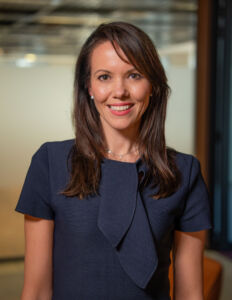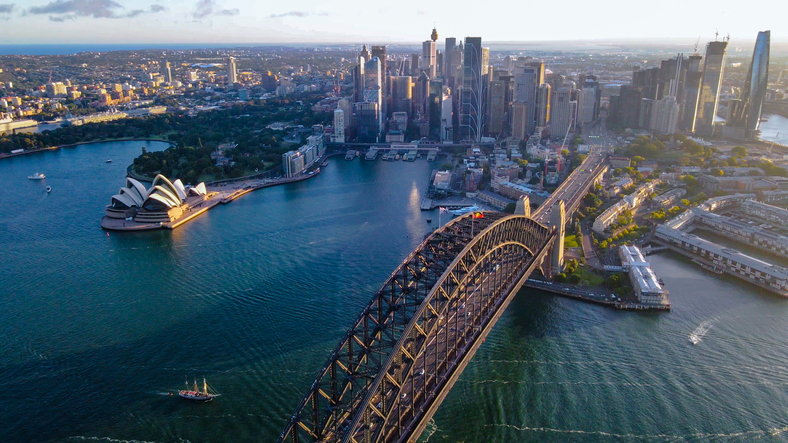Colonial First State, unlike many of its Australian investor peers with long track records in private markets, is underweight unlisted assets.
The wealth manager and superannuation provider looks after around A$160 billion ($103 billion; €88.6 billion) of funds under management on behalf of almost one million Australians – split around 80:20 between superannuation savers and users of its wealth management products.
One of the superfunds it manages, the FirstChoice Superannuation Trust, is the seventh-largest superfund in Australia with more than A$101 billion in assets, according to the most recent quarterly statistics from the Australian Prudential Regulatory Authority.

To rectify CFS’ relative shortfall in private markets, where its allocation currently sits at around 5 percent of its total portfolio, the fund hired Chloé Brayne in late 2024 to the new role of head of private equity and unlisted assets.
Brayne has been tasked with increasing the investor’s private markets allocation to around 7 percent of total funds within the next three years, deploying across real estate, infrastructure and private equity. Based on the fund’s AUM, this would equate to a little over A$11 billion in total.
Formerly a senior investment director at Canadian pension investor CDPQ (now known as La Caisse) and associate director, infrastructure at AustralianSuper, Brayne told PERE that now is an ideal time to focus on deploying into private markets: “We firmly believe that this is a great time in the cycle to start to increase our exposure to unlisted assets, and we think there are a lot of opportunities that have been brought to the fore by some of the volatility we are seeing in markets at the moment.”
Aussie assets
In real estate, CFS’ portfolio consists entirely of Australian assets, with its biggest sector exposure being industrial.
“We really like industrial assets, and most of our exposure here is located very close to Australia’s capital cities,” Brayne said. “We have been quite focused on last-mile logistics, which has held us in very good stead.
“We also have some healthcare and office assets, with the latter focused on high-quality assets. We have been quite judicious in what we’ve bought on that front.”
Brayne said that infrastructure and private equity are likely to see more focus on deployment in the short term, but added that she expects the property portfolio to grow over time as well.
“It’s probably more a question of timing and staging out our deployment in property,” she said.
“I spend quite some time thinking about the property asset class, because of our Australian exposure and questioning whether we should access offshore markets and how value-accretive that will be for our portfolio.”
Brayne cites geopolitics as an interesting thematic here, with on-again off-again tensions between the US and the EU potentially presenting investment opportunities “that may not be immediately obvious,” including in areas such as supporting increased defense spending by European governments.
“We have seen that come through on the property side because we’ve been having conversations about industrial assets, for example, from a defense and supply chain perspective in Europe.”
Brayne said CFS is “fairly open” as to whether it will deploy more capital into overseas property or into its home market. “We will go with whatever makes the best sense from a risk-adjusted return perspective. If there is a premium we can capture offshore for less risk than we would take in Australia, then obviously that would start to look pretty attractive for us.”
‘Peaky’ property
Brayne would not be drawn on a specific dollar amount to be committed to property within CFS’ private markets allocation increase, but said the investor would have flexibility on whether to commit to funds, pursue co-investments or make direct investments.
“In property, our strategy will continue to be focused mostly on managers and co-investing. We are unlikely to be buying individual assets directly – if we ever did do something direct, it would probably be a platform that would enable us to get a really good diversification impact on the portfolio. And particularly because our property portfolio is in a growth phase, how we build it out today will be very impactful on our overall returns.”
On how she thinks about the asset class versus other areas of private markets, Brayne said that property tends to be “more peaky” than infrastructure, adding that “avoiding the trough” in performance in cycles is important.
And, crucially, the differences between them mean that the fund is unlikely to begin bucketing them together as some Australian superfund peers have done in recent times – even if Brayne does not build out separate teams for infrastructure, real estate and private equity.
“I think there is merit in keeping them separate and overlaying them against each other, so that on a blended basis you are getting the returns you want.
“We think it makes a lot of sense [to have our team work across all three asset classes], though, as there’s a good crossover between them. If you sit across all three of them, you can be smarter around deployment.
“Look at data centers, for example. Do you go and get it through your infra exposure, or do you go and do powered land? Or do you even do PE and buy the services that are going into the data centers? If you sit across all three, you can add value to the underlying assets irrespective of where you own them because you have that broader knowledge.”
Ultimately, then, what will success look like for Brayne as she continues to build out the portfolio?
Creating a “strongly performing portfolio that has differentiation to our peers, that is really resilient, and is doing what it’s supposed to do in producing long-term, sustainable outcomes for members,” she said.


